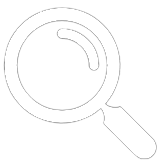BIOS
Touche Raccourcis Accès au
BIOS ou BOOT Menu
| Constructeur |
Modèle |
Boot menu |
BIOS |
| Acer |
|
Esc, F2, F9, F12 (faut activer le F12 Boot menu dans le BIOS) |
Del, F2, F12 |
| Asus |
|
Esc (Désactiver le Fast Boot et Secure Boot), F8 |
F2, F9, Del/Suppr |
| Compaq |
Presario |
Esc, F9 |
F10 |
| Dell |
|
F12 (Select USB Flash Drive) |
F2, F12 |
| eMachines |
|
F12 |
tab, Delete |
| Essentiel |
|
F8 |
F2 |
| Fujitsu |
|
F12 |
F2 |
| HP |
|
Esc, F9 |
Esc, F10, F1 |
| Huawei |
|
Esc, F12, F8 |
F2 |
| Intel |
|
F10 |
|
| Lenovo |
|
F8, F10, F12, Fn+F11 |
F1, F2, Fn+F2, Entrée puis F1 |
| Lenovo |
IdeaPad s300, u110, u310 Touch, u410, u510, y500, y510, yoga 11, yoga 13, z500 |
Bouton Novo à côté du bouton d'alimentation, F12 |
Bouton Novo |
| Medion |
|
|
F2 |
| Microsoft |
Surface Pro 1-3 |
|
Touche volume bas |
| Microsoft |
Surface Pro 4 & Book |
|
Touche volume haut |
| Packard Bell |
|
F8 |
F1, Del/Suppr |
| Samsung |
|
F12, Esc, F2 (Le Fast Boot doit être désactivé dans le BIOS) |
F2, F10 |
| Sony |
Vaio Duo, Pro, Flip, Tap, Fit |
Boutton Assistance, à utiliser quand ordinateur est éteint |
Boutton Assistance, à utiliser quand ordinateur est éteint |
| Sony |
Vaio, PCG, VGN |
F11, Esc, F10 |
F1, F2, F3 |
| Toshiba |
|
F12 |
ESC, F1, F2, F12 |
| Carte mère Asrock |
|
F11 |
F2, Del/Suppr |
| Carte mère EVGA |
|
F7 |
Del/Suppr |
| Carte mère Gigabyte |
|
F12 |
F2, Del/Suppr |
| Carte mère Intel |
|
F10 |
F2 |
| Carte mère MSI |
|
F11 |
Del/Suppr |
BIOS Keys by Manufacturer
ASRock: F2 or DEL
ASUS: F2 for all PCs, F2 or DEL for Motherboards
Acer: F2 or DEL
Dell: F2 or F12
ECS: DEL
Gigabyte / Aorus: F2 or DEL
HP: F10
Lenovo (Laptops): F2 or Fn + F2
Lenovo (Desktops): F1
Lenovo (ThinkPads): Enter then F1
MSI: DEL
Microsoft Surface Tablets: Press and hold volume up button
Origin PC: F2
Samsung: F2
Toshiba: F2
Zotac: DEL
To get to the BIOS when Windows 10 fails to boot
Failing to get the windows 10 repair screen by switching ON/OFF the PC
try to access the BIOS
for exemple in the case of a PC portable Packard Bell Easynote
disconnect the battery
use the power cable to stop & start the system
try F2 to get the BIOS when restarting the PC
then in the BIOS
enable F12 menu option
go to Boot section
enable Legacy System (disables UEFI bios setup)
then reboot & use F12 to select from the menu the DVD drive to reboot with a Windows 10 repair DVD
One switch for shutdown is /fw to reboot and enter firmware
command prompt(admin) enter =>>
shutdown /s /fw /t
Pour déconnecter du loggin en ligne de commande:
shutdown -l
See all shutdown options in windows 10 enter =>> shutdown /?
Quel type / mode de BIOS ?
Panneau de configuration\Outils d’administration\Information Système
read the BIOS Mode: UEFI or legacy or hérité
System with hard drive AHCI
BIOS: set to AHCI
Windows setup installs 3 partitions 2 systems
Activator does not work
BIOS: set disk to IDE
Windows setup installs 2 partitions 1 system rerserved
Activator works fine
Disable BIOS memory options such as caching or shadowing - cause: blue screen
BIOS
Integrated peripherals \ Onboard device setup \
Usb memory type : disable shadow : enable Base Memory 640k
To access uefi bios: remove the CMOS battery
To boot from a DVD or USB key under windows 10
Shift restart
select Bios EFI startup
will re-start and hopefully suggest to re-boot with the DVD
Un système qui ne démarre que sur le bios et non Windows:
Onglet Security ==> modifier Secure Boot Control pour le mettre en Disabled
Onglet Boot ==>
Fast Boot en Disabled
Launch CSM en Enabled
Save & Exit ou F10 ==> Yes
now asking for a boot device
BIOS acces Windows 8 Asus: press ESC key while restarting the system
BIOS access F2 ou ESC
Si cela ne fonctionne pas: éteindre complètement le PC, rester appuyé sur
la touche Esc / Echap puis appuyer sur le bouton Marche de l’ordinateur.
Réinstallation système
Acer : Alt+F10 ou Alt Gr+F10
Asus : F9
Dell : Ctrl+F11
HP : F10 ou F11 ou ESC Menu (la touche varie selon les modèles)
IBM ThinkPad : Entrée ou bien bouton Access IBM, etc.
Packard Bell : F9 ou F11 (la touche varie selon les modèles)
Sony VAIO : F10
Toshiba : F8
Windows 8
Configuration BIOS UEFI à partir du menu de démarrage Windows 8
Appuyer la touche Windows + C pour ouvrir la bar des Charmes
Cliquer Paramètres
Cliquer Modifier les Paramètres PC
Sélectionner Mise à jour récupération
Sélectionner Récupération
Sélectionner Démarrage avancé Redémarrer maintenant
Sélectionner Dépannage
Sélectionner Options Avancées
Sélectionner Changer les paramètres du microprogramme UEFI
Sélectionner Redémarrer pour redémarrer le système et accéder au BIOS UEFI
Si cetter option n'est pas disponible voir la section:
Désactivation du démarrage rapide de Windows
UEFI (Unified Extensible Firmware Interface)
On peut accéder au uefi en modifiant les paramètres de récupération dans windows 8
Pour démarrer avec un CD (media formatté MBR (non-uefi))
émuler un BIOS traditionnel :
a. désactiver dans Security le "Secure Boot Control"
b. activer dans Boot le "CSM"
c. désactiver dans Boot le "Fast Boot"
Puis redémarrer & essayer “ESC” ou “F2” ou "del" pour accéder au setup du BIOS
Selectionner le lecteur de DVD pour qu'il soit le premier au démarrage du boot
Attention if se peut qu'il ne démarre uniquement qu'à partir d'un bootable CD
To clear the BIOS Information such as the password:
Option 1
Turn OFF the computer and unplug the power cord.
Locate the jumper labeled CLEAR_PWD
In the default (normal) position the jumper is on pins 2-3
Move the jumper on jumper CLEAR_PWD to pins 1-2 to clear the BIOS
Plug the power cord and turn ON the computer
Hold down the F1 key or del during the startup process and enter BIOS setup to change or clear the password
After changing or clearing the BIOS passwords, remember to reset the jumper back to pins 2-3
Option 2
Turn OFF the computer and unplug the power cord
Remove the BIOS battery et leave the PC unplugged for a few hours.
PC qui redemarre automatiquement après son arret
Acceder au BIOS
Voir paramètres liés à la gestion de l'alimentation,
comme
Wake on LAN ou
Power on after power loss.
Désactivez ces options si elles sont activées.
Acceder aux options d'alimentation dans Windows:
Cliquer sur
Choisir l'action des boutons d'alimentation
puis sur
Modifier des paramètres actuellement non disponibles
Décocher l'option
Activer le démarrage rapide.
Commandes d'arrêt:
Utilisez la commande
shutdown /s /f /t 0
pour arrêter l'ordinateur.
Cela force l'arrêt complet du système sans redémarrage.
keywords: windows startup reinstall windows setup windows install windows boot failure reinitialise fast boot fast startup demarrage rapide pc that restarts after shutdown



 aformatique
aformatique